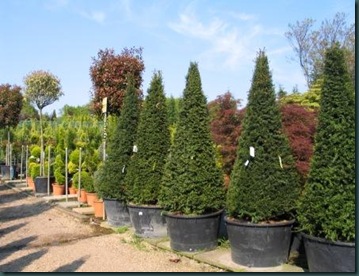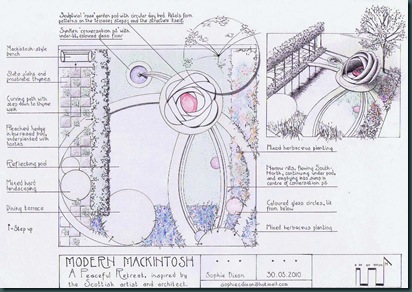-
To buy from trade nurseries you must be a trade customer. While some nurseries offer both retail and wholesale, most trade nurseries do not accept orders from the public, so be prepared to provide proof of your trade status when you first make contact.
-
Always visit a nursery in person before ordering from them for the first time. Many trade nurseries would want you to make an appointment to visit them rather than you just turning up on spec. Check to see how clean and tidy the nursery is, as this is often a good indication as to how good their plants are. If the nursery is untidy or has weeds growing in the pots or in the display aisles, this is not a good sign and indicates a certain level of neglect.
-
You often have to order a minimum number of each plant, usually that’s 10 or more of the same variety.
-
In the industry we have 2 levels of plant quality, landscape and garden centre quality. For private gardens you must use garden centre quality plants and I would always stress at the time of order, that I will only accept the very best and will reject anything that is not us to scratch. With some nurseries I would prefer to hand pick my plants in order to guarantee the standard, and suggest until you know and trust your nursery you do the same.
-
Don’t be afraid to reject substandard plants, but this does mean you have to be present when the order is delivered, so they are returned on the same lorry as they arrive. The nurseries will very quickly realise that you can’t be fobbed-off with poor quality stock.
-
Herbaceous perennial plants grow and mature very quickly so order P9 size plants where possible (small square pots) rather than 1-2 litre pot size. This means you will need to order them in good time and collect your plants in early spring before the nurseries start potting up. If you don’t, you could end up with a plant costing twice as much and all you get for your money is a larger pot and more soil.
-
Buy plants at the right time of year. I personally don’t like planting herbaceous plants in autumn as they don’t have long enough to get established before they go dormant for the winter. This may result in a much higher mortality rate. Instead I prefer to plant in spring, when I can see the young plants actively growing and they have a whole season to get established.
-
Some plants are only available at certain times of the year. Grasses have traditionally been most abundant in nurseries from August through to October, and are much harder to get in the spring as most of the stock will have been sold the previous year and new stock takes time to grow.
-
Plants that take longer to mature i.e.shrubs and trees should always be purchased as large as possible. I prefer to buy semi mature shrubs to give my borders an instant sense of maturity. The money I save on buying small herbaceous plants can be spent on larger shrubs. Semi mature trees are cheap! You can buy an 8m Beach or Oak for between £250-£400 Don’t buy garden centre size trees as it may be decades before your garden looks like the way you intend it to look.
-
Use plants you know you can get hold of! It’s no good specifying a rare plant that only one nursery in the world grows and then, only propagates 10 a year, because the chances are they won’t be available when you need them. I use my nursery catalogues to choose the plants that I want and I try to order as early in the season as possible to ensure they have not run out of stock. If they have, then I always choose the substitutes. Most nurseries will offer substitutes, but a good designer will always go back to the drawing board and redo the plan with available stock.
To see a list of trade nurseries I use in the UK click here
Technorati Tags: Trade nursery,Trade plants,Buying plants,Nurseries,herbaceous,perennials,shrubs,trees,growing,nursery,landscape,design
Saturday
Buying Wholesale Plants: Tips & Tricks
Garden Design Competition: Win a Place on the world’s first professional Online Design Course worth over $9000
You can now train as a garden designer from home, wherever you are in the world. Award-winning British garden designer, Duncan Heather, founder and principal of the Oxford College of Garden Design, has just launched the world's first-ever interactive online garden design course.
There's a lot misconception regarding the word online. Our new course is not a correspondence course you download from the web; it truly is online.
All lectures will be watched as on-line video tutorials. There will be interactive online exercises, and students will talk to their tutors using web chat and classes will be given via webinars.
Each online student will be allocated their own qualified garden design tutor and will follow the same timetable as the classroom students.
The one-year course provides a post-graduate level qualification in residential landscape architecture and offers:
- Interactive video tutorials and podcasts
- A personal tutor
- Community-based learning in the "virtual classroom", i.e. talking with fellow students via online forums
- Lectures to listen to on iPod/phone/MP3 player
- Online galleries – featuring ground plans, planting plans, construction drawings and more
- Monthly webinars - live video streams with question and answer sessions
- Interactive video tutorials on CAD (computer aided design) and ground modelling
HOW TO ENTER
Click here for details
Closing date is the 30th March 2010 so get your entries in soon!
Winning Design By Sophie Dixon



